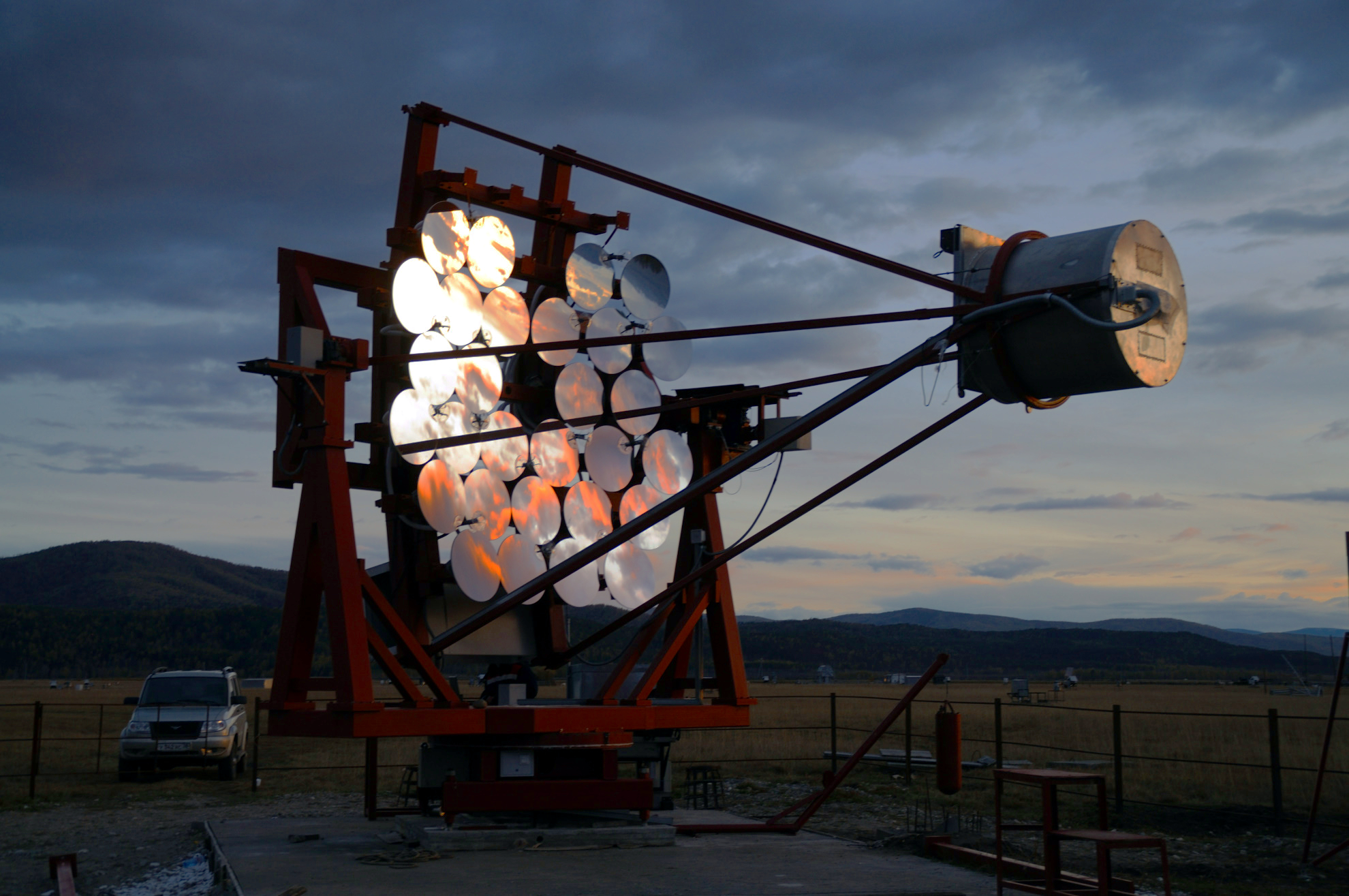Researchers hope to reveal secrets of history of Universe in Baikalia
News, 20 February 2021
Creation of a pilot complex of the TAIGA gamma-observatory completed at the astrophysical testing site of Irkutsk State University. It is one of the largest and the most sensitive tools for solving the tasks of high-energy astrophysics. Detectors using various principles and registration methods are placed in the territory of a square kilometre.
Scientists are confident that information coming from deep space may help understand the origin of the Universe, its development and its modern state. Researchers also believe that it will contribute to the understanding of fundamental laws of nature, and possibly will be the beginning of New Physics beyond the Standard Model.
 Photo © Irkutsk State University
Photo © Irkutsk State University
The creation of the pilot complex of the TAIGA gamma observatory is a mega-science project and is being implemented by the international collaboration in which the parent organization is Irkutsk State University.
The Joint Institute for Nuclear Research considers TAIGA as one of the priority projects in the fields of astrophysical studies and takes an active part in it. In particular, the Laboratory of Nuclear Problems JINR produces Imaging Atmospheric Cherenkov Telescopes (IACT) for TAIGA.
In addition to JINR and ISU, the international collaboration of the TAIGA experiment includes Moscow, Novosibirsk, and Altay State Universities, Moscow Engineering Physics Institute, the Institute for Nuclear Research RAS, the Institute of Nuclear Physics SB RAS, DESY, Hamburg University, other Russian and European scientific organizations and universities.
“The pilot complex of the TAIGA gamma-observatory is a unique facility. Its peculiarity is the use of various types of detectors aimed to study particles coming from deep space and conveying unique information about processes accompanied by the release of giant energy. These are the processes in which the energy can be released in a second that is comparable to the amount of energy that a billion suns emit per year. We already successfully register gamma-quantum fluxes that are practically inaccessible for research at other facilities. We also acquire unique results about many astrophysical phenomena and test fundamentally new methods and approaches so that to study cosmic particles,” an ISU scientist, Co-Leader of the TAIGA project Nikolay Budnev said.
When creating the pilot complex, scientists developed a number of new technologies, and a part of the studies continues. For example, one of the most important tasks for ISU researchers is still the creation of supersensitive cameras based on semiconductor detectors for detecting weak light flashes. The development of such cameras is in demand not only for astrophysical studies but also in other sciences, medicine and the high-tech sector of the economy.
Scientists plan to increase the area where the detectors are placed. It is expected to increase the area up to 10 square kilometres and put it at a higher altitude above sea level. Scientists state that this will take about 10 years: there is a joint Russian-Mongolian grant for the preparation of the project of such a facility. Its development will take about two or three years. Researchers are going to deploy the new gamma-laboratory in 5 – 7 years. Its possible location may be the upper reaches of the Tunka Valley or the area just beyond the border with Mongolia.
Source: Irkutsk State University
It should reminded that the TAIGA project was one of the winners of the competition in the category “Advanced Research” for successful long-term scientific cooperation in the competition of joint Russian-German projects.
